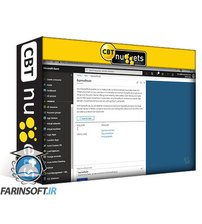1. Deploy Azure SQL Resources Manually
2. Azure SQL IaaS Deployment
3. Single Azure SQL Database Deployments
4. Elastic Pool Deployments
5. Azure SQL Managed Instance Deployments
6. Summarizing Azure SQL Manual Deployments
7. Introducing the Azure SQL Platform
8. IaaS vs PaaS Offerings
9. vCore and DTU Pricing Models
10. vCore Service Tiers
11. vCore Compute Tiers
12. PaaS Backups and HADR
13. Summarizing the Azure SQL Platform Offerings
14. Introducing Scaling Your Azure SQL Instances
15. Configure Azure SQL VMs for Scale
16. Configure Azure SQL DBs for Scale
17. Configure Azure SQL Managed Instances for Scale
18. Automate Azure SQL Database Scaling
19. Set Up SQL Data Sync
20. Understand Partitioning and Database Sharding
21. Understand Read Scale-Out
22. Introducing SQL Server Database Migrations to Azure
23. Understanding Your Options
24. Migrate to an Azure SQL VM - Offline
25. Migrate to an Azure SQL VM - Online
26. Migrate to an Azure SQL Database - Offline
27. Migrate to an Azure SQL Database - Online
28. Introducing SQL Authentication
29. Understand SQL Security Architecture
30. Create SQL Logins
31. Create SQL Database Users (and More!)
32. Implement Azure SQL Authentication Using Azure AD
33. Introducing SQL Server Authorization
34. Fixed Server Roles Explored
35. Deploying Custom Server Roles
36. Fixed Database Roles Explored
37. Custom Database Roles Explored
38. Configuring Object Access
39. Introducing Encrypting Data at Rest
40. Encrypt an Azure VM OS and Data Disk
41. Object-Level Encryption
42. Dynamic Data Masking
43. Transparent Data Encryption
44. Introducing SQL Server Always Encrypted
45. How Always Encrypted Works
46. Implement Always Encrypted On-Premises
47. Register Your App in Azure
48. Deploy Your Azure Resources
49. Implement Always Encrypted on an Azure DB
50. Create a .NET Console App to Use Always Encrypted
51. Introducing SQL Server Auditing and Security
52. Discover and Classify Data
53. Implement Change Tracking
54. Perform a Vulnerability Assessment
55. Create a Server Audit
56. Create a Database Audit
57. Analyzing Audit Results
58. Introducing Azure SQL Database Security Features
59. Azure SQL Auditing
60. Data Discovery and Classification
61. Dynamic Data Masking
62. Deploy with Transparent Data Encryption
63. Enable TDE After Deployment
64. Summarizing Azure SQL Security Features
65. Introducing SQL Server Monitoring
66. Creating a Baseline with Perfmon
67. Monitoring Disk Utilization
68. Monitoring CPU Load
69. Monitoring Memory Load
70. SSMS Performance Dashboard and Reports
71. Tracing with Extended Events
72. Introducing More SQL Performance Tuning Tools
73. Azure SQL Auto-Tuning
74. Storage Capacity Planning
75. Manually Updating SQL Statistics
76. Automate Statistic Maintenance
77. Summarizing SQL Performance Tools
78. Introducing Performance Troubleshooting on SQL Server and Azure
79. Enable the Query Store in SQL Server
80. Review Query Store Reports
81. Identify Blocking Sessions
82. Assess Growth and Fragmentation of Files
83. Summarizing Performance Troubleshooting
84. Introducing Index Maintenance Tasks
85. Repairing Fragmented Indexes
86. Repairing Fragmented Columnstore Indexes
87. Finding Missing Indexes
88. Removing Underutilized Indexes
89. Summarizing Index Maintenance
90. Introducing Azure Logic Apps and SQL
91. Exploring Logic Apps
92. Deploying the SQL Resources
93. Create an API
94. Create the SQL Workflow
95. Test the API
96. Explore Other SQL Actions
97. Introducing Azure SQL Automation
98. Deploy an Azure SQL DB Using PowerShell
99. Deploy an Azure SQL DB Using Az CLI
100. Deploy an Azure SQL VM Using Powershell
101. Deploy an Azure SQL DB from ARM Templates
102. Create an Email Alert with Powershell
103. Introducing SQL Server Failover Clusters
104. How Failover Clusters Work
105. Create the iSCSI Connection
106. Create the Failover Cluster
107. Explore Witness Options
108. Install SQL Server for the Cluster
109. Introducing SQL Failover Clusters on Azure VMs
110. The Azure Failover Cluster Architecture
111. Deploy the Azure Resources
112. Configure Secondary IPs on Azure VM NICs
113. Create the Windows Failover Cluster
114. Create the SQL Failover Cluster
115. Introducing SQL Server Backups
116. Understand the Backup Strategy
117. Perform Backups with T-SQL or SSMS
118. Backups with Filegroups
119. Automate Backups with Alerting
120. Introducing SQL Database Restoration
121. Perform SQL Database Restoration
122. Restore SQL Filegroups
123. Restore SQL Pages
124. Point in Time Recovery
125. Automate SQL Database Backup Tests
126. Introducing SQL Server Always-On Availability Groups
127. SQL Server Always-On Availability Group Designs
128. Create the Windows Server Failover Cluster
129. Create the Availability Group
130. Configure Read-Only Intent Scaling
131. Manage Failover Events
132. Introducing AGs on Azure VMs
133. SQL Availability Groups in Azure Considerations
134. Deploy the Necessary Resources in Azure
135. Prep the Azure VMs for SQL AGs
136. Configure the Cluster
137. Configure the Availability Group
138. Introducing Azure SQL DB HADR Solutions
139. Active Geo Replication
140. Azure SQL Backup Configurations
141. Restore Azure SQL Databases
142. Restore Deleted Azure SQL Databases
143. Configure Log Shipping










